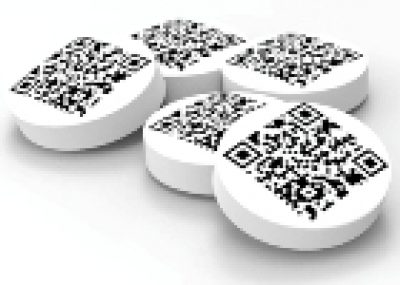Drug labeling is the number one topic in the pharmaceutical industry. But today, the qualitative implementation of such an important task for manufacturers and society is questionable. The number of those who doubt the successful launch of labeling is increasing every day.
The drug labeling experiment began in Russia at the beginning of 2017, the goal of which is to increase the transparency of the movement and accounting of medicines, to exclude counterfeit products from circulation.
Initially, in accordance with the instructions of the President of the Russian Federation of 2015, it was planned to gradually introduce an automated monitoring system, as in the Resolution of the Government of the Russian Federation of January 24, 2017 No. 62 “On Conducting an Experiment on Labeling with Control Signs on Monitoring the Circulation of Certain Medicinal Products use ”states that“ the priority for participation in the experiment are drugs intended to provide persons with hemophilia, cystic fibrosis, ipofizarnym dwarfism, Gaucher disease, malignant neoplasms of lymphoid, haematopoietic and related tissue, multiple sclerosis, persons after transplantation of organs and tissues". Viсtor Dmitriev, General Director of the Association of Russian Pharmaceutical Manufacturers, speaking at the annual conference “Labeling in the pharmaceutical industry,” noted that “the law said that data would be donated, we hope it will be like that. But in the course of the experiment a sum of 50 kopecks appeared, plus VAT for one code. On the one hand, the amount is small, but in the total volume of the drug market this is 3.5 billion rubles a year. ”
So according to the head of the National Association “APM” Nadezhda Daragan, “a manufacturer of a medium-sized enterprise, when producing about 40 million packages a year, will have to pay about 20 million rubles plus 2 million rubles of VAT for the provision of marking codes. This amount will lead to the fact that the production of drugs will be removed from the lower price segment, which will become unprofitable. In addition, in connection with the current situation, there will be some job cuts. ” The rules of the experiment are constantly changing. Manufacturers who entered the project until April 2018 purchased equipment and started working with Data Matrix, now they have to reconfigure equipment, or even buy new ones. No one compensates huge financial costs for the industry. There is no clear regulatory framework. Manufacturers often have to rely only on the recommendations of the operator, which often change, as the operator.
Russia is the only country in the world that has crypto protection in the general marking code. But so far there is no unambiguous opinion on the optimal number of characters in the "cryptotail". The current Government Decree No. 1556 of December 14, 2018 “On Approving the Regulations on the System for Monitoring the Movement of Medicinal Preparations for Medical Use” is fixed 88 characters, but during testing this length leads to a large culling during printing. To date, the operator is ready to cut it in half. “Even if the code is reduced now, we will have to start everything from the beginning, because the number of characters that are being discussed, namely 44 characters, will not change the issue in principle. We insist on 22, and then there are big doubts,” stressed Victor Dmitriev. In support of his words, the expert cited the statistics of the working group of Federal Service for Surveillance in Roszdravnadzor: “with the marking, according to the current rules, the producers have growing amount of flaws. And not on the minimum percentage, but in some cases it reaches 89%. 20-30% — the average number of defects in the experiment, when the limit is 0.5 -1% ".
Dmitry Alkhazov, the director of the Center for Development of Advanced Technologies, absolutely disagrees with such arguments. In his opinion: “a change in the requirements for the composition of the code does not require a total transformation of the marking process. Type 2 characters, 20 or 44 are one and the same,” which surprised the conference participants very much.
Due to frequent failures in the experiment, to the lack of dialogue and understanding with the operator, with gaps in the regulatory framework — the business insists on holding parliamentary hearings and postponement of the entry into force of the law on mandatory labeling of drugs from January 1 next year for an indefinite period .
“We are very concerned about the current situation. On December 31, the experiment should be completed, from January 1, we must live in a new way: label everything. And the results of the pilot project will be summarized only in February 2020. The industry proposes to organize high-quality state inspection of the entire Federal State Information System Monitoring of drug movement (DMM) system. There must be responsible people who will decide on the readiness of the system,” Dmitriev said.
He was fully supported by the manufacturers. In their opinion, “for drugs, introduction term should be discussed separately; one should not equate pharmaceutical products with fur coats and tobacco products. The industry is not ready to start universal labeling. ”
Representatives of the pharmaceutical industry stressed that if there are no changes now, then at the beginning of 2020 there will be a man-made collapse associated with the stock-out of drugs. The consequences of this are socially dangerous!
ARPM Press Service

